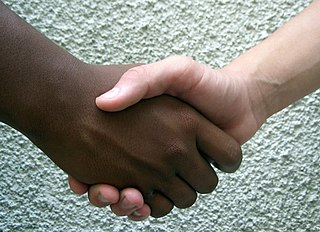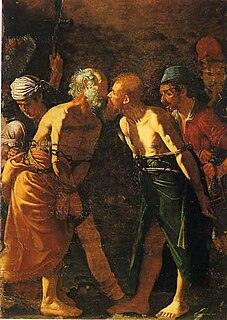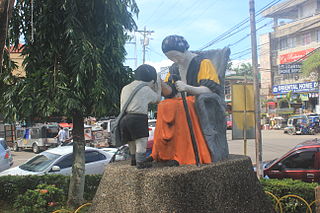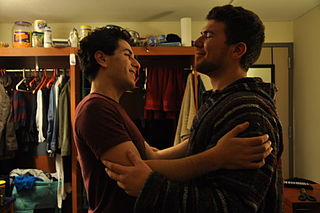 W
WGreeting is an act of communication in which human beings intentionally make their presence known to each other, to show attention to, and to suggest a type of relationship or social status between individuals or groups of people coming in contact with each other. Greetings are sometimes used just prior to a conversation or to greet in passing, such as on a sidewalk or trail. While greeting customs are highly culture- and situation-specific and may change within a culture depending on social status and relationship, they exist in all known human cultures. Greetings can be expressed both audibly and physically, and often involve a combination of the two. This topic excludes military and ceremonial salutes but includes rituals other than gestures. A greeting, or salutation, can also be expressed in written communications, such as letters and emails.
 W
WAhoy is a signal word used to call to a ship or boat, stemming from the Middle English cry, 'Hoy!'. The word had fallen into obsolescence before rising from obscurity as the sport of sailing rose in popularity. 'Ahoy' can also be used as a greeting, a warning, or a farewell.
 W
WBowing is the act of lowering the torso and head as a social gesture in direction to another person or symbol. It is most prominent in Asian cultures but it is also typical of nobility and aristocracy in many European countries. It is also used in religious contexts, as a form of worship or veneration. Sometimes the gesture may be limited to lowering the head such as in Indonesia, and in many cultures several degrees of the lowness of the bow are distinguished and regarded as appropriate for different circumstances. It is especially prominent in Nepal, India, Thailand, Laos, Vietnam, China, Korea, Japan, where it may be executed standing or kneeling. Some bows are performed equally by two or more people while others are unequal – the person bowed to either does not bow in return or performs a less low bow in response. A nod of the head may be regarded as the minimal form of bow; forms of kneeling, genuflection, or prostration which involves the hands or whole body touching the ground, are the next levels of gesture.
 W
WBread and salt is a welcome greeting ceremony in some Slavic, Nordic, Baltic, Balkan and other European cultures as well as in Middle Eastern cultures. The tradition, known by local Slavic names was also adopted by three non-Slavic nations — Lithuanians, Latvians and Romanians (Romance) — all three of which are culturally and historically close to their Slavic neighbours. It is also common in Albania, Armenia, the Jewish diaspora, and the Middle East. This tradition has also been observed in spaceflight.
 W
WCheek kissing is a ritual or social kissing gesture to indicate friendship, family relationship, perform a greeting, to confer congratulations, to comfort someone, to show respect.
 W
WDap is a friendly gesture of greeting, agreement, or solidarity between two people that has become popular in Western cultures, particularly since the 1970s, originating from African American communities. Giving dap typically involves handshaking, pound hugging, fist pounding, or chest- or fist bumping. The practice and term originated among black soldiers during the Vietnam War, as part of the Black Power movement, and the term is attested from around 1969. 90% of those imprisoned in the Long Binh Jail during the war were African Americans; it was in the jail that the handshake was created under pan-African nationalist influences.
 W
WDexiosis, in the fine arts, is the representation of two people offering each other their right hand.
 W
WThe elbow bump is an informal greeting where two people touch elbows. Interest in this greeting was renewed during the avian flu scare of 2006, the 2009 swine flu pandemic, the Ebola outbreak of 2014, and the COVID-19 pandemic when health officials supported its use as an alternative to hand-shaking to reduce the spread of germs. During the latter pandemic, authorities advised that even an elbow bump was too risky, and suggested greeting from a distance.
 W
WA fist bump is a gesture similar in meaning to a handshake or high five. A fist bump can also be a symbol of giving respect or approval, as well as companionship between two people. It can be followed by various other hand and body gestures and may be part of a dap greeting. It is commonly used in sports as a form of celebration with teammates and with opposition players at the beginning or end of a game. Fist bumps are often given as a form of friendly congratulation.
 W
WA handshake is a globally widespread, brief greeting or parting tradition in which two people grasp one of each other's like hands, in most cases accompanied by a brief up-and-down movement of the grasped hands. Using the right hand is generally considered proper etiquette. Customs surrounding handshakes are specific to cultures. Different cultures may be more or less likely to shake hands, or there may be different customs about how or when to shake hands.
 W
WA hat tip is an act of tipping or doffing one's hat as a cultural expression of recognition, respect, gratitude, or simple salutation and acknowledgement between two persons.
 W
WThe traditional Māori greeting, the hongi is performed by two people pressing their noses together; some include, at the same time, the touching of foreheads. The greeting is used at traditional meetings among Māori people, and at major ceremonies, such as a pōwhiri. It may be followed by a handshake.
 W
W"How now brown cow" is a phrase used in elocution teaching to demonstrate rounded vowel sounds. Each "ow" sound in the phrase represents the diphthong /aʊ/. Although spelled "ow" in these four words, this same diphthong is also spelled "ou". Some examples of these homophonic /aʊ/s are the English words "house", "blouse", "noun", and "cloud". The use of the phrase "how now brown cow" in teaching elocution can be traced back to at least 1926.
 W
WA kiss is the touch or pressing of one's lips against another person or an object. Cultural connotations of kissing vary widely. Depending on the culture and context, a kiss can express sentiments of love, passion, romance, sexual attraction, sexual activity, sexual arousal, affection, respect, greeting, friendship, peace, and good luck, among many others. In some situations, a kiss is a ritual, formal or symbolic gesture indicating devotion, respect, or sacrament. The word came from Old English cyssan, in turn from coss .
 W
WThe kiss of peace is an ancient traditional Christian greeting, sometimes also called the "holy kiss", "brother kiss", or "sister kiss". Such greetings signify a wish and blessing that peace be with the recipient, and besides their spontaneous uses they have certain ritualized or formalized uses long established in liturgy. Many denominations use other forms of greeting to serve equivalent purposes; they include handshakes, gestures, and hugs, any of which may be called a sign of peace.
 W
WMano or pagmamano is an "honoring-gesture" used in Filipino culture performed as a sign of respect to elders and as a way of requesting a blessing from the elder. Similar to hand-kissing, the person giving the greeting bows towards the hand of the elder and presses their forehead on the elder's hand. Usually performed with the right hand, the person showing respect may ask "Mano po" or "[Pa-]bless po" to the elder in order to ask permission to initiate the gesture. Typically someone may mano to their older relatives upon entry into their home or upon seeing them.
 W
WNamaste, sometimes spoken as namaskar and namaskaram, is a customary, non-contact form of respectfully greeting and honoring the opposite person or group, this can be used always irrespective of what time of the day it is. In the contemporary era, it is found on the Indian subcontinent, Southeast Asia and among the Indian diaspora worldwide. The gesture is widely used in the parts of Southeast Asia where Indian religions are strong. It is used as a greeting. Namaste is usually spoken with a slight bow and hands pressed together, palms touching and fingers pointing upwards, thumbs close to the chest. This gesture is called añjali mudrā; the standing posture incorporating it is pranamasana.
 W
WThe pound hug is a stylized greeting, exclusively performed between two people, that consists of a combination of a handshake and one-armed hug. Unlike the traditional hug, which symbolically and effectively removes interpersonal barriers and unites the two persons embracing, the pound hug—performed by keeping the right hand locked in handshake while the left arm wraps around the other's shoulder—interposes the obstacle of the two right arms to the joining of the two bodies.
 W
WThe Roman salute is a gesture in which the arm is fully extended, facing forward, with palm down and fingers touching. In some versions, the arm is raised upward at an angle; in others, it is held out parallel to the ground. In contemporary times, the former is widely considered a symbol of fascism that is commonly perceived to be based on a custom in ancient Rome. However, no Roman text gives this description, and the Roman works of art that display salutational gestures bear little resemblance to the modern Roman salute.
 W
WA salute is a gesture or other action used to display respect. When saluting a person, as distinct from a flag or a National Anthem or other symbolic melody, the gaze must be towards that person, also when returning a salute. Thus, the respectable salute includes a greeting. Not looking at the person, as with most gestured greetings, is likely to be interpreted as disrespectful or an eye deficiency. Salutes are primarily associated with armed forces and law enforcement, but other organizations, such as girl guides, and boy scouts and other civilians also use salutes.
 W
WThe Sampeah is a Cambodian greeting or a way of showing respect. It is very similar to the Thai wai. Both Sampeah and Thai wai are based on the Indian Añjali Mudrā used in namasté. Pranāma or Namaste, the part of ancient Indian culture has propagated to southeast Asia, which was part of indosphere of greater India, through the spread of Hinduism and Buddhism from India.
 W
WThe left-handed Scout handshake is a formal way of greeting other Scouts of both genders and is used by members of Scout and Guide organizations around the world. The handshake is made with the hand nearest to the heart and is offered as a token of friendship. In most situations, the handshake is made firmly, without interlocking fingers, and many organizations only use this handshake when both people are in uniform. There are some variations of the handshake between national Scouting organizations and also within some program sections.
 W
WThe three-finger salute is used by members of Scout and Guide organizations around the world when greeting other Scouts and in respect of a national flag at ceremonies. In most situations, the salute is made with the right hand, palm face out, the thumb holding down the little finger, and with the fingertips on the brow of the head. There are some variations of the salute between national Scouting organizations and also within some programme sections.
 W
WSembah is an insular Southeast Asian greeting and gesture as a way of demonstrating respect and reverence. While performing the sembah, the person clasped their palms together solemnly in a prayer-like fashion called suhun or susuhun in Javanese; or menyusun jari sepuluh in Malay, and placed them in front of the chest, and moving the combined palms up to the chin, or all the way up until the thumbs touching the tip of the nose, while bowing slightly. Any of these two forms are made depending on the status of the person greeted.
 W
WThe shaka sign, sometimes known as "hang loose", is a gesture of friendly intent often associated with Hawaii and surf culture. It consists of extending the thumb and smallest finger while holding the three middle fingers curled, and gesturing in salutation while presenting the front or back of the hand; the hand may be rotated back and forth for emphasis. While the shaka sign has spread internationally from its Hawaiian cultural roots to surf culture and beyond, the hand gesture also bears a variety of meaning in different contexts and regions of the world.
 W
WThe Thai greeting referred to as the wai consists of a slight bow, with the palms pressed together in a prayer-like fashion. It has its origin in the Indian Añjali Mudrā, like the Indian namaste and Burmese mingalaba. The higher the hands are held in relation to the face and the lower the bow, the more respect or reverence the giver of the wai is showing. The wai is traditionally observed upon formally entering a house. After the visit is over, the visitor asks for permission to leave and repeats the salutation made upon entering. The wai is also common as a way to express gratitude or to apologise.
 W
WThe two-finger salute is a salute given using only the middle and index fingers, while bending the other fingers at the second knuckle, and with the palm facing the signer. This salute is used by the Polish Armed Forces, other uniformed services, and, in some countries, the Cub Scouts.
 W
WThe Vulcan salutation is a hand gesture popularized by the 1960s television series Star Trek. It consists of a raised hand with the palm forward and the thumb extended, while the fingers are parted between the middle and ring finger.
 W
WA water salute occurs for ceremonial purposes when a vehicle travels under plumes of water expelled by one or more fire fighting vehicles.
 W
WA welcome is a kind of greeting designed to introduce a person to a new place or situation, and to make them feel at ease. The term can similarly be used to describe the feeling of being accepted on the part of the new person.
 W
WZolgokh is a traditional Mongolian formal greeting. Two people hold both their arms out, and the younger person's arms are placed under the elder person's and grasps their elbows to show support for their elder. The two people then touch each other's cheeks, usually accompanied with the phrase Amar mend üü, meaning "Are you well and peaceful?".